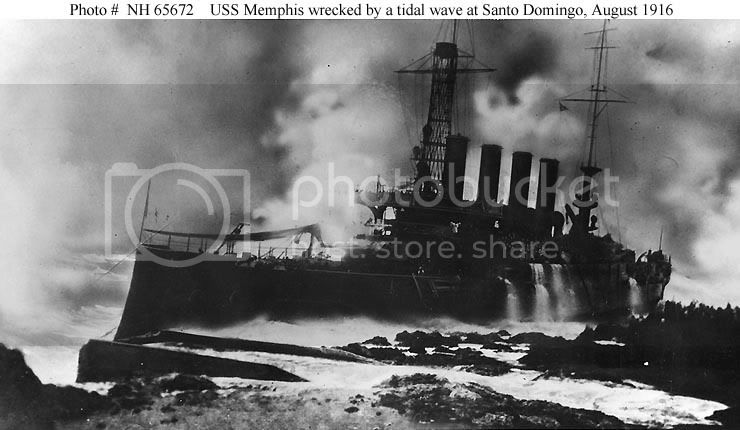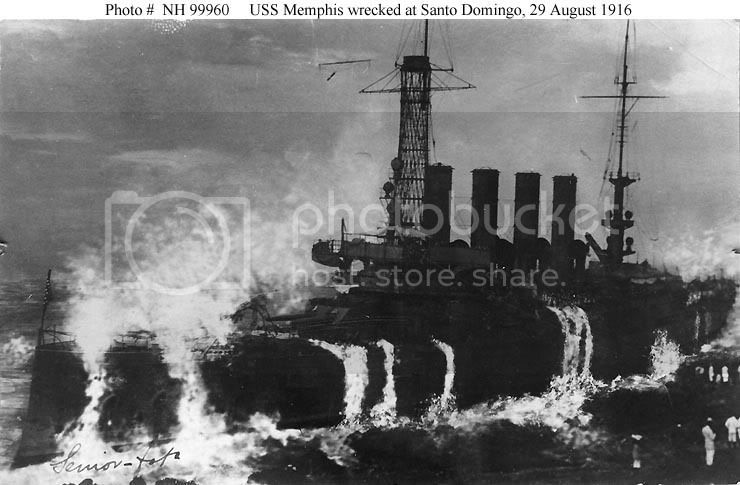Loss of USS Memphis, 29 August 1916

At three in the afternoon of the 29th of August 1916, the 14,500-ton armored cruiser USS Memphis and the 1177-ton gunboat Castine were riding gently, anchored in the open roadstead off Santo Domingo, capital city of the Dominican Republic. Rear Admiral Charles F. Pond, for whom Memphis was flagship, and a recreation party were ashore and the remainder of the ships' officers and crews were engaged in normal duties. Far away somewhere in the depths of the Atlantic Ocean or Caribbean Sea, a seismic event had already generated a powerful tsunami, or tidal wave, as such things were then termed. One of the two ships would barely escape its effects, while the other would be driven ashore a complete wreck. More than forty men would lose their lives.

Perhaps twenty minutes later, Memphis' Executive Officer was troubled by the "looks of the sea" and at about half past three Captain Edward L. Beach, the cruiser's Commanding Officer, ordered steam power increased enough to allow his ship to leave the anchorage. Previous experience had demonstrated that this could be done in about forty minutes. Waves began breaking ashore and, since Memphis was now rolling too much to recover boats in the water, two of hers were sent out to sea, soon to be followed by one of Castine's. Shortly afterwards, when a large wave was seen on the horizon, both ships began to prepare for heavy weather. This laborious work was greatly hindered by violent rolling and pitching as waves rapidly became larger and then immense. The effort to get steam up on Memphis suffered even more, with the problem becoming worse as water began to flow over her decks and enter through ventilators, incompletely closed gunports, and even her four tall smokestacks. As a result, when the main tsunami waves reached the anchorage about half-past four, Memphis did not have enough steam available to run her engines properly. She dragged her anchor, all the while battering her bottom against the bottom, normally some twenty-five feet below her keel. At about five PM she went hard aground near Santo Domingo's rocky coastal cliffs.
Castine, meanwhile, had gotten clear of the anchorage, following a heroic effort that left her badly battered and barely seaworthy. A motor launch, erroneously sent out of port with much of Memphis' recreation party embarked, had foundered in the tremendous breakers, leaving twenty-five men dead. Another eight Sailors were lost when the three boats sent to sea sank or were wrecked attempting to reach shore after dark. Ten more were fatally injured on board Memphis, either by being washed overboard or from burns and steam inhalation as the ship's powerplant broke apart during her ordeal.
The big cruiser's remaining officers and men, many of them badly injured, were brought ashore by ship to shore lines, hastily rigged by U.S. Marines, Navy personnel and local residents. USS Memphis, so thoroughly damaged as to be not worth refloating, remained just off Santo Domingo's shoreline for many years, a monument to a sudden tsunami, one of nature's most unforseeable and powerful forces.
The next instalment will about the Memphis' Chief Engineer, who received the Medal of Honor for his conduct when she was driven ashore
Regards
Sean












